
Hi Everybody!!
You might notice the 'guard dog on duty' here at the Wild Bird Sanctuary. He is on high alert for Snow! On Wednesday it was a record 85 degrees and today, Friday, it is 33 right now. They say about Texas: "If you do not like the weather, wait a minute and it will change". This part of Texas has missed the ice and snow so far today. The weather outside is frightful and the fire is so delightful......With the magic of GoogleEarth, we will have snow on this blog tonight! Let it Snow!
*Reminder: Hempstead Bluebonnet Open House Christmas Party is Postponed until next Saturday, the 14th.***


The Snow is from our friends at G+ Auto Awesome Backup! Thanks for the Smiles

http://en.wikipedia.org/wiki/Let_It_Snow!_Let_It_Snow!_Let_It_Snow!
Let It Snow! Let It Snow! Let It Snow!
From Wikipedia, the free encyclopedia
Recording history[edit]
First recorded in 1945 by Vaughn Monroe,[1] it became a popular hit, reaching No. 1 on the Billboard music chart the following year. One of the best-selling songs of all time, "Let It Snow!" has been covered countless times. Due to its seasonal lyrics, it is commonly regarded as a Christmas song. However, the song has no Christmas references and is therefore a seasonal song shared by those who do not join in the celebration of Christmas.
In 1945, Woody Herman recorded the song with himself on vocals and an iconic trumpet solo by Sonny Berman.
In 1950, Frank Sinatra recorded the song with The Swanson Quartet.
In 1959, Dean Martin recorded the song for his album A Winter Romance. He also recorded a different version in 1966 for The Dean Martin Christmas Album.
In 1963, Smokey Robinson & The Miracles recorded the song for their holiday album, Christmas with The Miracles.
In 1964, Doris Day recorded the song for her first holiday album, The Doris Day Christmas Album.
In 1965, Andy Williams recorded the song for his second holiday album, Merry Christmas.
In 1993, Aaron Neville recorded the song for his Christmas album, Aaron Neville's Soulful Christmas.
In 1997, country group Ricochet recorded a Barbershop music-style (but accompanied) version of the song, released as a single.
In 1998, Chicago recorded the song for their first Christmas album, Chicago XXV. In 1998 Martina McBride recorded an uptempo version of the song, which was released as the first single from her album White Christmas. The song reached No. 64 on the Hot Country Songs chart.
In 2003, Michael Buble recorded the song for his holiday EP, Let It Snow.
In 2004 Royce Campbell recorded the song on his CD, "A Jazz Guitar Christmas." In 2004 Chris Isaak also recorded the song for his album Christmas.
In 2004, Contemporary Christian artist The Katinas covered the song on their 2004 album Family Christmas.
In 2005, the song was covered by Carly Simon but was sung from the point of view of the host instead of the guest.
In 2006, Celtic Woman recorded the song for their second album, Celtic Woman: A Christmas Celebration. Celtic Woman also performed the song as part of their A Christmas Celebration concert on 7 December 2007 at the The Helix in Dublin. In 2006 it was also recorded by Twisted Sister for their holiday album A Twisted Christmas.
In 2010, Lady Antebellum recorded the song for their holiday EP, A Merry Little Christmas. In 2010 it was also recorded by The Puppini Sisters for their holiday album Christmas with The Puppini Sisters, Alyson Stoner (as Isabella Garcia-Shapiro) covered the song for the Christmas album Phineas and Ferb: Holiday Favorites, and Kylie Minogue released a version on iTunes.
In 2011, Cascada recorded a version of the song to promote a potential Christmas album, along with a music video featuring Natalie Horler and Yanou in the studio. This version was included on their 2012 Christmas album, It's Christmas Time. WestcountyScrumpy and Western band The Wurzels also recorded the song for their 2011 Christmas Album.[2] Also in 2011, Chris Colfer andDarren Criss performed the song on the TV show Glee as Kurt Hummel and Blaine Anderson respectively in the episode "Extraordinary Merry Christmas". It had been released the month before on the album Glee: The Music, The Christmas Album Volume 2.
In 2012, Airborne recorded the song for their holiday album, Christmas: Holiday Music. In 2012 it was also recorded by Christina Perri for her holiday album A Very Merry Perri Christmas, Blake Shelton for his holiday album Cheers, It's Christmas and Alexander Rybak for his album Christmas-Tales.
Also in 2012, Rod Stewart recorded the song for his first holiday album, Merry Christmas, Baby. His version reached No. 1 onBillboard's Adult Contemporary chart in December 2012.[3] The song remained in the No. 1 spot for a total of five weeks, tying it for the longest leading rendition of a holiday title in the history of the chart.[4]
In 2013, Jewel recorded the song for her second holiday album, Let It Snow.

Squirrel Nest


Squirrel
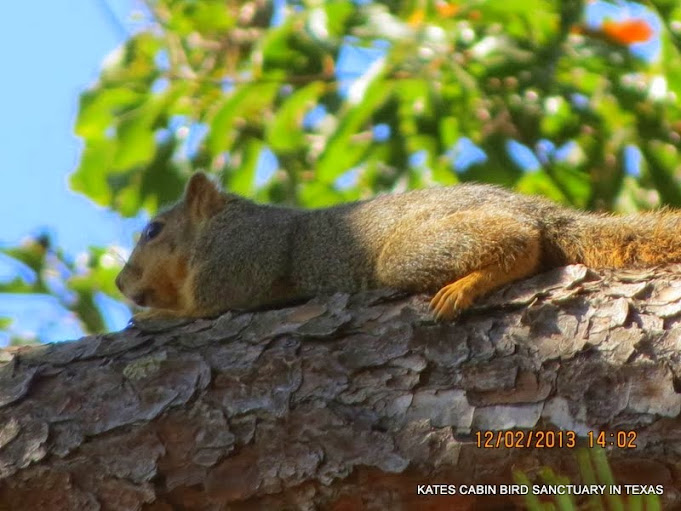
The Loquats are blooming

http://en.wikipedia.org/wiki/Loquat
Loquat
From Wikipedia, the free encyclopedia
The loquat (Eriobotrya japonica) is a species of flowering plant in the family Rosaceae,native to south-central China.[2] It is a large evergreen shrub or small tree, grown commercially for its yellow fruit, and also cultivated as an ornamental plant. It was formerly thought to be closely related to the genus Mespilus, and is still sometimes known as the Japanese medlar. It is also known as Japanese plum[3] and Chinese plum.[4] In Japan it is called biwa.[5] And in China, it is called Lo Guat (芦橘) inCantonese and pipa (枇杷) in Mandarin.
| Loquat Eriobotrya japonica | |
|---|---|
 | |
| Loquat leaves and fruits | |
| Scientific classification | |
| Kingdom: | Plantae |
| (unranked): | Angiosperms |
| (unranked): | Eudicots |
| (unranked): | Rosids |
| Order: | Rosales |
| Family: | Rosaceae |
| Genus: | Eriobotrya |
| Species: | E. japonica |
| Binomial name | |
| Eriobotrya japonica (Thunb.) Lindl. | |
Description
Eriobotrya japonica is a large evergreen shrub or small tree, with a rounded crown, short trunk and woolly new twigs. The tree can grow to 5–10 metres (16–33 ft) tall, but is often smaller, about 3–4 metres (9.8–13 ft). The leaves are alternate, simple, 10–25 cm long, dark green, tough and leathery in texture, with a serrated margin, and densely velvety-hairy below with thick yellow-brown pubescence; the young leaves are also densely pubescent above, but this soon rubs off.
Fruit[edit]
Loquats are unusual among fruit trees in that the flowers appear in the autumn or early winter, and the fruits are ripe in late winter or early spring. The flowers are 2 cm (1 in) in diameter, white, with five petals, and produced in stiff panicles of three to ten flowers. The flowers have a sweet, heady aroma that can be smelled from a distance.
Loquat fruits, growing in clusters, are oval, rounded or pear-shaped, 3–5 cm long, with a smooth or downy, yellow or orange, sometimes red-blushed skin. The succulent, tangy flesh is white, yellow or orange and sweet to subacid or acid, depending on the cultivar.
Each fruit contains from one to ten ovules, with three to five being most common.[6] A variable number of the ovules mature into large brown seeds. The skin, though thin, can be peeled off manually if the fruit is ripe. In Egypt varieties with sweeter fruits and fewer seeds are often grafted on inferior quality specimens.[citation needed]
The fruits are the sweetest when soft and orange. The flavor is a mix of peach, citrus and mild mango.
History[edit]
| This section does not cite any references or sources. (October 2012) |
The loquat is originally from southeastern China. It was introduced into Japan and becamenaturalised there in very early times, and has been cultivated there for over 1,000 years. It has also become naturalised in Afghanistan, Kenya, India, Iraq, the whole Mediterranean Basin, Pakistan and many other areas. Chinese immigrants are presumed to have carried the loquat to Hawaii.
The loquat was often mentioned in ancient Chinese literature, such as the poems of Li Bai. In Portuguese literature, it is mentioned since before the Age of Discovery.[7]
Cultivation[edit]
Over 800 loquat cultivars exist in Asia. Self-fertile variants include the 'Gold Nugget' and 'Mogi' cultivars.[8] The loquat is easy to grow in subtropical to mild temperate climates where it is often primarily grown as an ornamental plant, especially for its sweet-scented flowers, and secondarily for its delicious fruit. The boldly textured foliage adds a tropical look to gardens, contrasting well with many other plants. It is popular in the American South as an ornamental plant for its blossoms, though winter frosts rarely allow the flowers to survive and bear fruit the following spring.
There are many named cultivars, with orange or white flesh.[9] Some cultivars are intended for home-growing, where the flowers open gradually, and thus the fruit also ripens gradually, compared to the commercially grown species where the flowers open almost simultaneously, and the whole tree's fruit also ripens together.
In temperate climates it is grown as an ornamental with winter protection, as the fruits seldom ripen to an edible state. In the United Kingdom, it has gained the Royal Horticultural Society's Award of Garden Merit.[10]
In the highland parts of Central America, the loquat has become naturalized, and is often found growing wild in areas that have been disturbed but abandoned, its seeds having been dispersed by birds. Below 1000 meters, the fruit remains inedible for its high acidity, but above it, the wild fruit is appreciated and much harvested for its sweet, fruity flavor. It is occasionally planted for living fenceposts, as the tree is long-lived, not much subject to disease, and the wood is hard and durable. Good quality logs are much sought-after by furniture makers in Central America, who prize its hardness and durability[citation needed].
In the US, the loquat tree is hardy only in USDA zones 8 and above, and will flower only where winter temperatures do not fall below30 °F (−1 °C). In such areas, the tree flowers in autumn and the fruit ripens in late winter.[8]

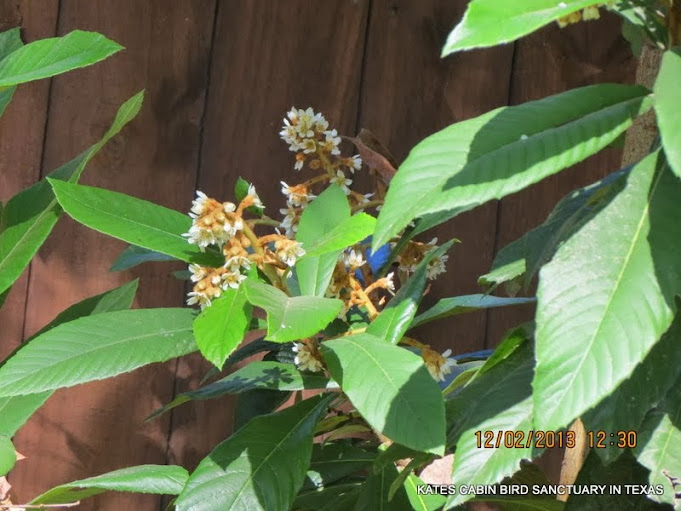

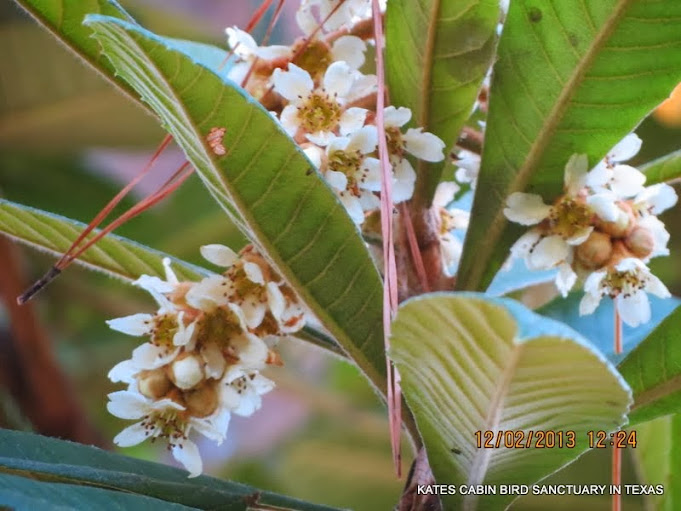
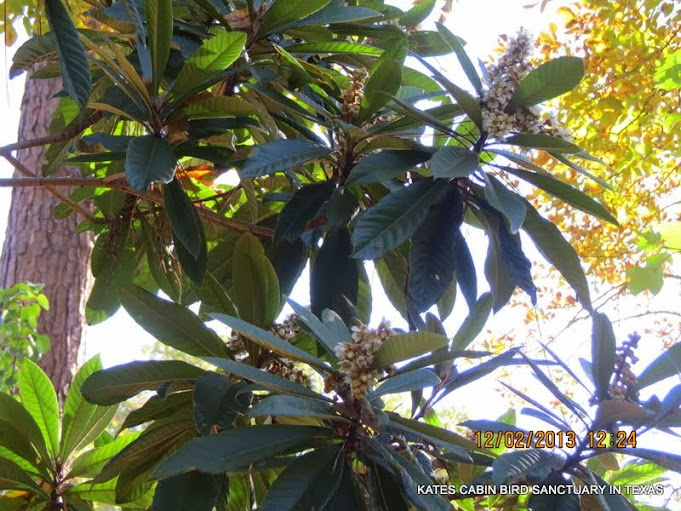
Link to Album Photustudy in G+ Gallery:
https://plus.google.com/u/0/photos/117645114459863049265/albums/5954056158661130609

Fall Color On My Trees





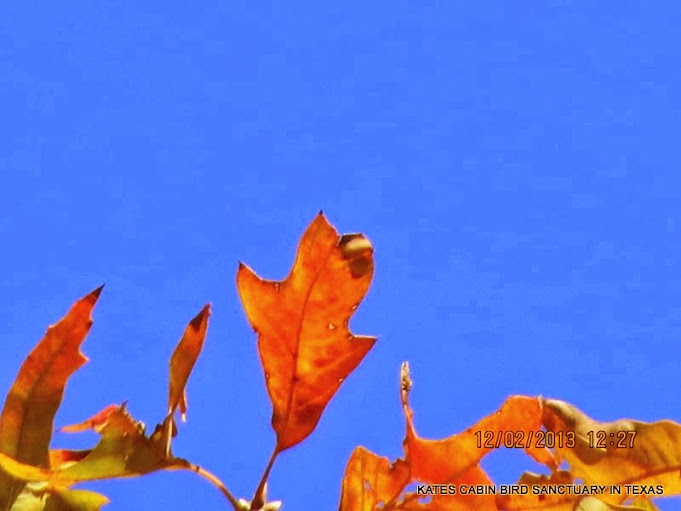


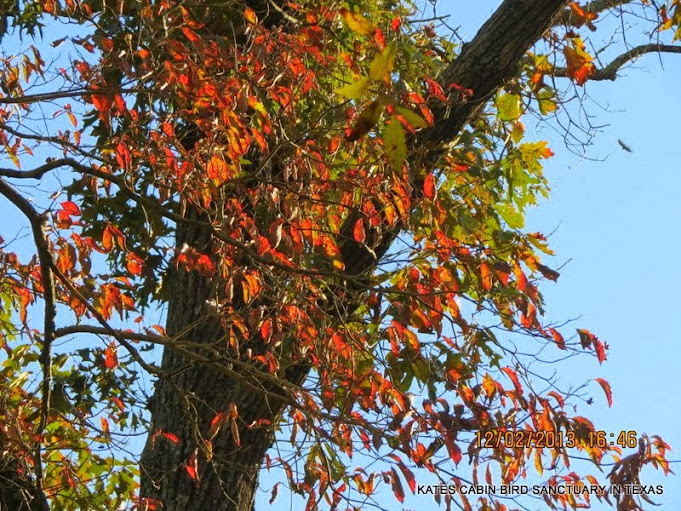
...this is brendasue signing off from Rainbow Creek. See You next time.
Stay Warm and Comfortable!

O+O




No comments:
Post a Comment
Hi Everybody! Please say hello and follow so I know you are here! Due to the inconsideration of people trying to put commercials on my blog comment area, I have restricted use of anonymous posts. Sorry that some hurt all.
My public email is katescabin@gmail.com No spammers or trolls